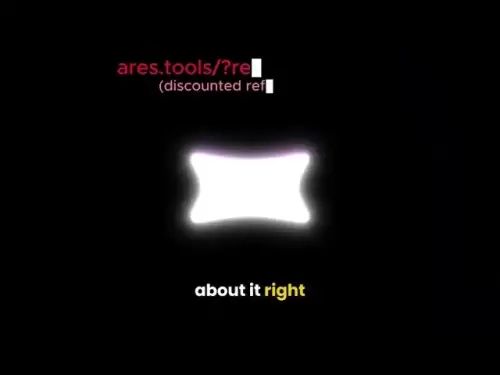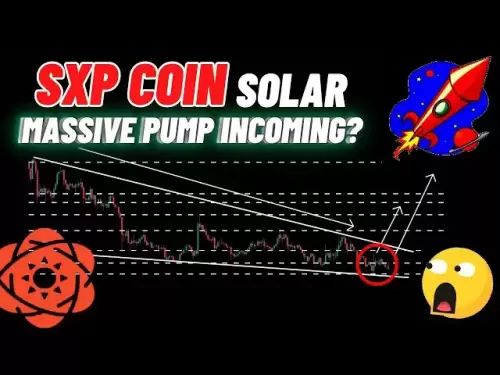-
 Bitcoin
Bitcoin $117500
2.04% -
 Ethereum
Ethereum $3759
3.02% -
 XRP
XRP $3.171
3.30% -
 Tether USDt
Tether USDt $1.000
0.03% -
 BNB
BNB $782.4
2.52% -
 Solana
Solana $187.2
5.62% -
 USDC
USDC $0.0000
0.02% -
 Dogecoin
Dogecoin $0.2380
5.26% -
 TRON
TRON $0.3175
1.07% -
 Cardano
Cardano $0.8227
4.03% -
 Hyperliquid
Hyperliquid $44.50
5.44% -
 Sui
Sui $4.020
10.07% -
 Stellar
Stellar $0.4396
6.28% -
 Chainlink
Chainlink $18.32
4.55% -
 Hedera
Hedera $0.2628
10.71% -
 Bitcoin Cash
Bitcoin Cash $554.8
4.90% -
 Avalanche
Avalanche $24.20
4.60% -
 Litecoin
Litecoin $113.7
2.31% -
 Shiba Inu
Shiba Inu $0.00001413
5.99% -
 UNUS SED LEO
UNUS SED LEO $8.984
0.11% -
 Toncoin
Toncoin $3.326
7.22% -
 Ethena USDe
Ethena USDe $1.001
0.00% -
 Uniswap
Uniswap $10.49
4.56% -
 Polkadot
Polkadot $4.092
4.02% -
 Monero
Monero $326.6
1.30% -
 Dai
Dai $1.000
-0.01% -
 Bitget Token
Bitget Token $4.570
2.49% -
 Pepe
Pepe $0.00001267
5.10% -
 Aave
Aave $297.3
3.10% -
 Cronos
Cronos $0.1344
4.10%
What does it mean when the price breaks through the 60-day moving average with a large volume but shrinks the next day?
A high-volume breakout above the 60-day MA signals bullish momentum, but shrinking volume the next day raises caution about the rally's sustainability.
Jul 26, 2025 at 06:01 am

Understanding the 60-Day Moving Average in Cryptocurrency Trading
The 60-day moving average (60DMA) is a widely used technical indicator in the cryptocurrency market that smooths out price data over the past 60 trading days. It helps traders identify the overall trend direction by filtering out short-term price fluctuations. When the current price is above the 60DMA, it often signals a bullish trend, while a price below suggests bearish momentum. Traders watch for crossovers—when the price moves above or below this average—as potential entry or exit signals. The significance of the 60DMA increases when combined with volume analysis, as volume confirms the strength behind price movements.
Interpreting a Breakout with High Volume
A price breakout above the 60-day moving average accompanied by high trading volume typically indicates strong buying pressure and potential trend reversal or continuation. This surge in volume suggests that a large number of market participants are participating in the move, which adds credibility to the breakout. In the crypto market, where volatility is high and sentiment shifts rapidly, such volume spikes can reflect institutional interest, coordinated retail buying, or news-driven momentum. When this occurs, traders may interpret it as a signal that the asset is gaining bullish momentum and could continue to rise.
- Confirm the breakout by checking if the closing price remains above the 60DMA
- Analyze the volume bar on the candlestick chart to ensure it is significantly higher than the average volume of the past 10–20 days
- Cross-verify with other indicators like RSI or MACD to avoid false signals
This kind of breakout is especially meaningful after a prolonged downtrend, as it may signal the start of a new uptrend. However, the sustainability of the move depends on follow-through in the coming sessions.
Significance of Volume Contraction the Following Day
When the breakout day is followed by a reduction in trading volume, even if the price holds above the 60DMA, it raises questions about the strength of the rally. Shrinking volume suggests that the initial surge in buying interest may not be sustained. This could mean that the breakout was driven by a temporary wave of enthusiasm—perhaps due to a tweet, news headline, or short-term speculation—rather than long-term accumulation by informed investors.
- A large volume breakout followed by low volume may indicate a "bull trap" if the price fails to advance further
- Low follow-up volume reduces confidence in the breakout’s validity
- Price action becomes more critical: if the next few candles show indecision (e.g., doji or small bodies), the breakout may fail
Traders often use volume profile tools to compare the breakout volume against historical levels. A volume that is 1.5 to 2 times the 20-day average is generally considered strong. If the next day’s volume drops below the average, caution is warranted.
Price Action After the Breakout: What to Watch For
After a high-volume breakout above the 60DMA followed by shrinking volume, traders should closely monitor the candlestick patterns and price behavior in the subsequent sessions. Key elements to observe include:
- Whether the price consolidates above the 60DMA or retests it as support
- The presence of long upper or lower wicks, which may indicate rejection
- Whether the closing prices remain above the breakout level
If the price holds steady or forms a bullish pattern like a bullish engulfing or ascending triangle, the breakout may still be valid. Conversely, if the price drops back below the 60DMA on rising volume, it could confirm a failed breakout. In cryptocurrency markets, where leverage and sentiment play major roles, such patterns can unfold rapidly.
Support and resistance levels around the 60DMA should also be considered. If the moving average aligns with a historical price zone (e.g., a previous swing high), the breakout carries more weight. Tools like Fibonacci retracement or pivot points can help identify these confluences.
Strategic Responses for Crypto Traders
Given the mixed signal—strong breakout volume followed by shrinking volume—traders should adopt a cautious yet structured approach. Immediate full-position entry is risky. Instead, consider the following steps:
- Wait for confirmation: look for at least two consecutive green candles with stable or increasing volume
- Use limit orders slightly above the breakout point to avoid chasing price
- Set stop-loss orders just below the 60DMA or the breakout candle’s low
- Scale in gradually rather than investing a large amount at once
Technical traders might combine this setup with momentum indicators. For example, if the Relative Strength Index (RSI) is above 50 and rising, it supports bullish continuation. If RSI diverges (price makes a new high but RSI does not), it could warn of weakening momentum.
On trading platforms like Binance or TradingView, setting up alerts for price crossing the 60DMA and volume spikes can help react quickly. Custom scripts or Pine Script indicators can automate the detection of such patterns.
Common Misinterpretations and How to Avoid Them
One common mistake is assuming that any breakout above the 60DMA is inherently bullish. Without volume confirmation, such moves can be misleading. Another error is ignoring the broader market context. For example, a breakout in a low-cap altcoin during a Bitcoin downtrend may lack sustainability.
- Avoid relying solely on the 60DMA; combine it with trendlines, volume profiles, and on-chain data
- Be cautious during low-liquidity periods (e.g., weekends), when volume spikes can be exaggerated
- Check for news or events that may have caused the volume surge—some are short-lived
Using multiple timeframes can also help. A daily breakout may look strong, but if the 4-hour chart shows distribution or overbought conditions, the signal weakens.
Frequently Asked Questions
Can a shrinking volume after a breakout still lead to a successful trend?
Yes, in some cases, shrinking volume after a breakout indicates efficient price movement with minimal selling pressure. If the asset is in a strong uptrend and the 60DMA acts as dynamic support, low volume pullbacks are normal. The key is whether price continues to make higher highs without significant retracement.
How do I distinguish between a genuine breakout and a bull trap?
A genuine breakout is confirmed by sustained price action above the 60DMA and follow-through volume in subsequent days. A bull trap often shows a quick reversal below the moving average, especially on rising volume. Watch for candlestick rejection patterns like shooting stars or bearish engulfing candles.
Does the 60-day moving average work the same across all cryptocurrencies?
The 60DMA functions similarly across assets, but its effectiveness varies with liquidity and volatility. Major coins like Bitcoin and Ethereum tend to respect technical levels more reliably due to higher participation. Low-cap altcoins may exhibit erratic behavior, making the 60DMA less dependable without additional confirmation.
Should I use the 60-day simple moving average or exponential moving average?
The simple moving average (SMA) treats all days equally, offering a smoother line. The exponential moving average (EMA) gives more weight to recent prices, making it more responsive. For breakout confirmation, EMA may signal earlier, but SMA provides fewer false signals. Traders often use both to identify support/resistance zones.
Disclaimer:info@kdj.com
The information provided is not trading advice. kdj.com does not assume any responsibility for any investments made based on the information provided in this article. Cryptocurrencies are highly volatile and it is highly recommended that you invest with caution after thorough research!
If you believe that the content used on this website infringes your copyright, please contact us immediately (info@kdj.com) and we will delete it promptly.
- Pi Coin, Wallet Features, and Coinbase: What's the Buzz?
- 2025-07-26 18:30:12
- Worldcoin, Punisher Coin, and the Meme Coin Mania: What's the Haps?
- 2025-07-26 18:30:12
- Dogecoin Trajectory: From Meme to Mainstream and Beyond in Crypto
- 2025-07-26 17:10:14
- LasMeta, Pyth Network, NovaDrop NFTs: Decoding the Buzz
- 2025-07-26 16:30:12
- SHIB Long/Short: Riding the Shiba Inu Waves Like a Pro
- 2025-07-26 17:50:12
- VeChain (VET) Price Prediction: Will VET Reach $0.040 in August 2025?
- 2025-07-26 16:50:12
Related knowledge

What does it mean that the rebound is blocked after the moving average is arranged in a short position for the first time?
Jul 26,2025 at 10:51am
Understanding the Short-Term Moving Average ConfigurationWhen traders refer to a 'short position arrangement' in moving averages, they are describing ...

What does it mean that the parabolic indicator and the price break through the previous high at the same time?
Jul 26,2025 at 07:22pm
Understanding the Parabolic Indicator (SAR)The Parabolic SAR (Stop and Reverse) is a technical analysis tool developed by J. Welles Wilder to identify...

What does it mean when the price rises along the 5-day moving average for five consecutive days?
Jul 26,2025 at 08:07am
Understanding the 5-Day Moving Average in Cryptocurrency TradingThe 5-day moving average (5DMA) is a widely used technical indicator in cryptocurrency...

What does it mean when ADX breaks through 25 and +DI continues to rise?
Jul 26,2025 at 07:00pm
Understanding the ADX Indicator and Its ThresholdsThe Average Directional Index (ADX) is a technical analysis tool used to measure the strength of a t...

What does it mean when the price breaks through the 60-day moving average with a large volume but shrinks the next day?
Jul 26,2025 at 06:01am
Understanding the 60-Day Moving Average in Cryptocurrency TradingThe 60-day moving average (60DMA) is a widely used technical indicator in the cryptoc...

What does the sudden rise of ADX in DMI accompanied by +DI crossing -DI indicate?
Jul 26,2025 at 01:21pm
Understanding the DMI and Its Core ComponentsThe Directional Movement Index (DMI) is a technical analysis tool used to determine the presence and stre...

What does it mean that the rebound is blocked after the moving average is arranged in a short position for the first time?
Jul 26,2025 at 10:51am
Understanding the Short-Term Moving Average ConfigurationWhen traders refer to a 'short position arrangement' in moving averages, they are describing ...

What does it mean that the parabolic indicator and the price break through the previous high at the same time?
Jul 26,2025 at 07:22pm
Understanding the Parabolic Indicator (SAR)The Parabolic SAR (Stop and Reverse) is a technical analysis tool developed by J. Welles Wilder to identify...

What does it mean when the price rises along the 5-day moving average for five consecutive days?
Jul 26,2025 at 08:07am
Understanding the 5-Day Moving Average in Cryptocurrency TradingThe 5-day moving average (5DMA) is a widely used technical indicator in cryptocurrency...

What does it mean when ADX breaks through 25 and +DI continues to rise?
Jul 26,2025 at 07:00pm
Understanding the ADX Indicator and Its ThresholdsThe Average Directional Index (ADX) is a technical analysis tool used to measure the strength of a t...

What does it mean when the price breaks through the 60-day moving average with a large volume but shrinks the next day?
Jul 26,2025 at 06:01am
Understanding the 60-Day Moving Average in Cryptocurrency TradingThe 60-day moving average (60DMA) is a widely used technical indicator in the cryptoc...

What does the sudden rise of ADX in DMI accompanied by +DI crossing -DI indicate?
Jul 26,2025 at 01:21pm
Understanding the DMI and Its Core ComponentsThe Directional Movement Index (DMI) is a technical analysis tool used to determine the presence and stre...
See all articles

























































































